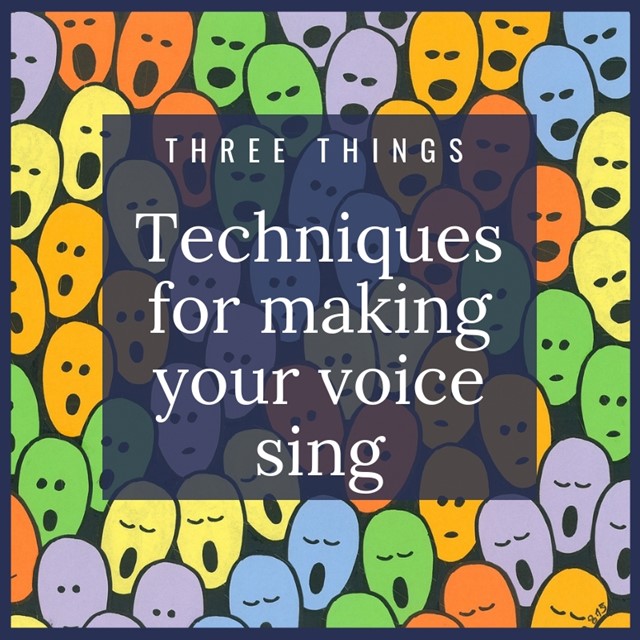
"Most people don’t even come close to using the full range of their voices."
– Buckley vocal coach Emmalee Robbins
The session is a bit of a shock for some students in The Buckley School’s Executive Seminar—the moment when we hand them over to veteran actor and director Emmalee Robbins for 45 minutes of vocal training.
That’s because Emmalee comes at the task like a mischievous pixie, urging them to make noise, move recklessly, and toss dignity to the wind.
The silliness has a serious point, Emmalee says, to get you to explore the possibilities of the voice you were born with—so that you can make the most of it.
 Emmalee Robbins on the porch at The Buckley School, contemplating the fun she has in store for our unwitting students.
Emmalee Robbins on the porch at The Buckley School, contemplating the fun she has in store for our unwitting students.
“When people come to me for vocal coaching, their motives are to change or 'fix' their voices. But most people don’t even come close to using the full range of their voices, the voices they already have,” she says. “I want people to stretch themselves, to see what’s possible.”
Here are three things Emmalee suggests that every speaker try—perhaps on stage—and most definitely in rehearsals:
1. Move your body to energize your voice.
“Of course, breath is how we generate sound,” says Emmalee, “but voice is a product of the entire body.”
When you move your body—rather than concentrate only on breathing—you quickly see the connections.
If your voice feels flat or sluggish, you might try:
- Adding gestures for emphasis. When you emphasize a point with your hand, your voice tends to follow.
- Acting out, with body language, the story or example you’re using. When you shift your focus to showing the audience, your voice becomes energized along with your actions.
- Bending your knees and getting your upper body into the act. Speakers often shuffle their feet. But when they plant feet shoulder width apart, loosen their knees, and focus on moving energy up and out, the voice usually comes to life, as well.
2. Explore your vocal range.
“See how high, how low you can go. Be loud. Be soft. Break out of that middle zone,” Emmalee says.
Some ways you can do this:
- Recite a familiar rhyme, changing your voice to create at least 5 variations.
- See how many ways you can shape the meaning of the phrase “I must go” by changing volume, emphasis, phrasing, pitch, pace, and tone.
- Imitate the vocal patterns of speakers you hear on TV or radio by repeating what they’re saying, out loud. (A great one for the car when you’re driving alone, by the way.)
3. Exaggerate to enunciate.
In The Executive Seminar, Emmalee leads students through a series of sounds, urging them to hit the consonants, roll the vowels around—and also control the explosion of air that makes plosive consonants pop.
Exaggeration is also a great tool for warming up before a presentation:
- Practice by saying the sentences so that you give every syllable a workout and put extra emphasis on the final consonants of words.
- You may find that this approach also helps you slow a too-fast pace; it’s hard to rush when you are giving every word its due.
- In your presentation before an audience, you shouldn’t continue to exaggerate—but you should see a carryover from the rehearsal that helps you speak with crisper enunciation and a better sense of how to deliver every word.
Another way to work on vocal delivery is to read poetry out loud (which is why we provide a fresh poem for this pursuit every month). You might try recording some of your readings, so that you can hear where you’re doing well—and where there might be room to improve.
And in the video, below, a glimpse of how Emmalee pushes speakers to stretch their delivery:






